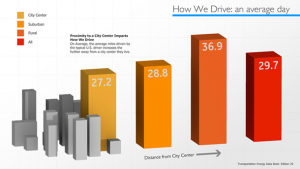Oftentimes when we think about SEO and search engine marketing, we think about Google as the only search engine that matters.
However, there are many different search engines that we don’t think about, like YouTube, or, for businesses that sell products online, Amazon.
Amazon’s search engine helps products get ranked and helps you find the right product to suit your needs based on your search entries.
Without it, your products might not be found and you could lose out on potential sales. Thankfully, Amazon SEO can help your brand find success and reach customers.
- But what exactly is Amazon SEO?
- How does the Amazon algorithm rank your product listings and how can you improve?
- And what Amazon SEO tools are available to help you track your SEO and help your business grow?
In this article, we’ll answer all these questions and help you understand everything you need to know about Amazon SEO.
What is Amazon SEO?
Amazon SEO is very similar to web-based SEO.
The Amazon search engine algorithm uses different ranking factors to determine the value of your content, in this case, product listings, in comparison to competitors based on what customers are searching for.
In order to appear in the first few items during an Amazon search, you need to understand how to navigate the Amazon algorithm and learn different tactics for improving your on-page content.
This will help you to stay at the top of the results.
How Does Amazon’s Algorithm Work?
The Amazon search engine is the brain behind the ranking of different product listings on the results page.
The algorithm is designed around the idea of clicks and selling.
To put it simply, Amazon wants sales to go through. So it’s in the best interest of the company to match search queries with products that people will purchase.
This makes the Amazon search engine different from Google or other search engines.
Google’s algorithm looks at a large number of SEO items, such as location, content length, backend setup, code, and other factors.
Amazon’s algorithm is only focused on promoting listings that have high click and purchase rates.
What are Amazon’s Ranking Factors?
Now that you know the end goal of Amazon’s search engine algorithm, let’s take a closer look at the different factors that can influence your product listing rankings and convince the algorithm that your product is a good match for searchers.
Product’s Title
This is one of, if not the most, important elements of your Amazon SEO strategy.
The product title is where you want to put the most relevant keywords for your products.
If you think back to your own Amazon searches and the results, the product names are often quite long and detailed. Titles can include:
- Brand names
- Clear descriptions
- Ingredients and materials
- Colors
- Sizes
- Product quality
Seller Name
Your own seller name also carries SEO weight.
You can use your name to help target specific categories or demographics and include keywords within your seller title.
Your seller name doesn’t have to specifically match your brand name unless your brand name is searched on Amazon directly.
Backend Keywords
As with traditional backend SEO, backend keywords aren’t seen by readers but are a tool that can help search engines learn more about your content.
Think of it as comparable to if you use specific keywords in your web page meta tags. Using your Amazon Seller Account backend section, you can target important keywords.
Brand Field
Many Amazon shoppers search for products based on the associated brand name, meaning that it’s important for you to list your brand on product pages.
It will show up above your title, so make sure you pick the best brand name variation.
Product Description
Your product description copy is where customers will get the bulk of the information they need about your product.
Your copy, therefore, needs to be clear, informative, and persuasive.
You also need to include your keywords. Bullet points are a great way to get a lot of detailed product information across to readers quickly.
Being as thorough as possible will help your rankings.
Product’s Price
Because Amazon wants to promote products that sell, your price point is an important factor in how well your product pages rank.
You need to keep your prices competitive with similar products.
If Amazon projects that your products are priced too high and products from other sellers are more likely to convert, they will promote your competition.
Conversion Rate
Conversion rates are important to the Amazon SEO algorithm, as it helps it determine exactly how often customers purchase your products.
However, it’s important to keep in mind that you won’t have clear insight into this number like you might on other e-commerce platforms, so you might have to do some manual calculations on your product sales and conversions.
Product Images
It’s a simple fact: products with great images will sell better.
Grainy, low-res images of a product aren’t going to convince Amazon shoppers that your product is great or that you are a legitimate seller they should give money to.
Amazon has specific image specs listed, so make sure you match them before you upload any photos.
Reviews
Last, but certainly not least, are your product reviews.
You can have the clearest descriptions, highest-resolution images, and the best keywords, but if your reviews are bad, people won’t buy your products.
Ask people who have purchased your products to leave reviews, and if you get an influx of negative feedback, carefully read the reviews to see if you can improve your product or listing.
How to Optimize Your Amazon Ranking
Optimizing your different factors will help you improve your Amazon rankings.
Once you understand the importance of each individual ranking factor, you can work on putting together a comprehensive strategy that targets each point.
Here are a few examples of things you can do to optimize your rankings:
- Writing great Amazon sales copy and product titles.
- Taking high-quality product photos and videos.
- Creating the best product descriptions compared to competitors.
- Listing product features as bullet points.
- Prioritizing the user experience on your product page.
- Getting great reviews and managing your ratings and questions.
- Conducting keyword research to pick the best target keyword phrases.
Amazon SEO Tools: Which is the Best SEO Tool for Amazon?
While you may have a better idea of how to improve your rankings, it can still be hard to manage your copy and keywords without the help of one or more Amazon SEO tools.
Having a keyword checker or other Amazon SEO tool by your side can cut down on many of the concerns you have about picking the right words and optimizing the right content.
Here are a few of the best Amazon SEO tools for your business:
Ahrefs Site Explorer
Ahrefs helps you identify which keywords are bringing visitors to your different product pages.
You also get a dashboard that helps you monitor different Amazon metrics that might be hard to calculate or track on your own.
You’ll see your results for all your keywords to help you decide how to move forward.
MerchantWords
MerchantWords is a great tool for those without much keyword research or SEO experience.
It helps you find specific keywords related to your products and helps you increase your online sales without needing to spend your team’s time on research.
KeywordInspector
KeywordInspector helps you find new and trending keywords related to your products, as well as helps you track weekly and monthly keyword trends.
You can also use different features to help you optimize specific content to attract more buyers.
Scientific Seller
Scientific Seller is completely free, which is great for businesses working on a budget.
It helps you find keyword information based on buyer history and brings your brand relevant and qualified keywords to add to your product listings.
Google Keyword Planner
While Google Keyword Planner is geared towards helping you find keywords to use in your Google ads, the keyword planner can still help your brand find useful information regarding keywords in your industry, market, and that are related to your products.
Keyword Tool
Keyword Tool helps you find long keyword phrases, otherwise known as long-tail keywords, that you can use to build your product descriptions, titles, and backend tags.
You can also use this tool for traditional SEO alongside your Amazon SEO keywords.
Sonar
Sonar is a Google Chrome extension that helps you find keywords for listings and any related marketing campaigns.
You can also discover the keywords your competitors are using and learn which keywords brought in the most profit based on Amazon buyer history.
Wrap Up
Understanding how to navigate the Amazon SEO algorithm and appearing first in searches takes some time and strategy planning.
Having the right Amazon SEO tools in your repertoire will help you reach your growth goals and help you sell more to customers looking for your products.
If you want to learn more about SEO, take a look at our comprehensive SEO guide!
This will help you find information on different types of SEO, like on-page, off-page, local and technical. You’ll also learn how to get started with your own SEO strategy and how to gain more authority in your market.
![What is Amazon SEO? [+ The Amazon SEO Tools You Need to Use]](https://rockcontent.com/wp-content/uploads/2021/11/amazon-seo-tools-1024x538.png)
![[WA] Ultimate Content Marketing Kit](https://rockcontent.com/wp-content/uploads/2022/08/Content-Marketing-Kit-750x200px.jpg)

![[ROCK NA] [EBOOK SEO] Complete Guide](https://rockcontent.com/wp-content/uploads/2024/06/banner_Search-Engine-Optimization.png)






